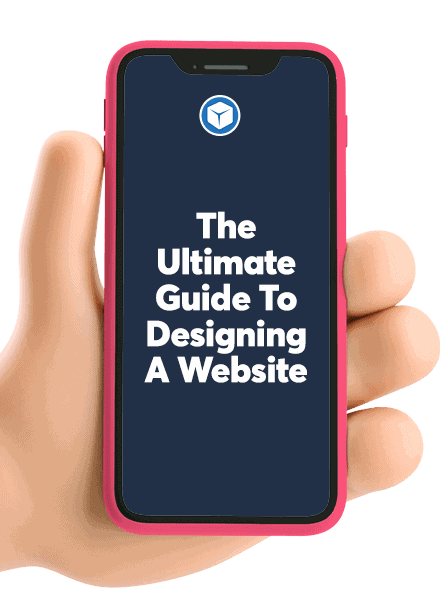
An effective positioning statement should be clear, visible, and indexable on every page of your website. However, writing a positioning statement is harder than most people think. In this article, I will provide a simple guide to writing positioning statements.
Everything you do on your website, from graphics and copy, products and landing pages will always come back to what your customer’s needs are.
In order to get it right, you have to know EXACTLY what your customer wants, likes, needs and desires.
A really handy tool to have is a positioning statement. This is a short description about your target market.
It covers a number of things about them including;
- who your target market is
- what you have to offer them
- how you can meet their needs with your offer
- and why your offer is better for them than anything your competitor has.
See if you can cover these points in 15 words or less.
Overall it captures how you want your target market to view your brand. This will give you direction on all your future marketing decisions. You simply need to refer your idea back to the position statement to know if a particular piece of copy, photo, advert or product is in alignment with your positioning statement.
If you have not already uncovered your business Why, you’ll need to go back and do this in order to have a positioning statement that aligns with your company goals and purpose.
Once you have a solid understanding of your ideal audience, it helps bring clarity and focus when you are writing your copy, because you know exactly who it is for and what they want to hear. This will help you make decisions about what type of language to use and what problems they are facing that you want them to be aware of, as well as how to position your solution.
This clarity is the key to great marketing. When you are clear about what you do and how it fits in your audience’s life, you can write compelling, convincing and attractive copy that delivers a strong and consistent message.
You want to display a clear marketing message in a highly visible location on every page on your website.
It’s easy to get bogged down writing your copy, even when you take positioning into account. As well as your audience needs, here are some key factors to consider when you are writing your copy for your website pages:
- Keep it as brief as possible
- Include a promise you can deliver on
- Describe how you stand apart from your competitors (your unique position in the market)
- Remain loyal to your business values
- Make it memorable and unique
Thinking about getting all those elements perfectly into your copy can cripple your creativity and leave your mind blank.
That’s why you need to just start with a bullet-point draft that covers who you are, what you do and how this is beneficial. This will give you a clear message that can be the foundation of your copy structure. Always make sure that what you offer and what you promise is in line with your business values.

Clarity is the first thing that will attract your reader
If your reader senses any kind of conflict or confusion in your message you will lose them immediately, not just from your offer, but they will probably exit from your website as well.
They are searching for a clear and focused message on what you do and how you can deliver.
Satisfy these needs and give them a reason to stay with you. You not only engage their interest, but you also earn their trust.
Even if you do explain yourself further in, they are unlikely to keep reading to find it. First impressions count so make sure you say what you need to say upfront with a crystal clear message.
Remember, you are not available to sit beside every web page visitor and talk them through it. Your message on the screen needs to be able to speak for itself.
Showcase your expertise
In most cases, your expertise will be what sets you apart from the competition. That’s why an important part of your message is showcasing what you do, and how this can look after the needs of your target audience.
Communicate what you do (your expertise) and who benefits from this as simply and clearly as possible. This positions you as capable, reliable and safe to your reader.
The very last part of your copy, after you have informed your audience about what you do and who it’s for, is to make it sound memorable and unique. If you spend too much energy making your copy funny, cheeky or emotionally evocative, you risk losing clarity.
Get all the information your reader needs up first, and worry about making it unique at the very end, without too many changes.
Selecting the right words
Selecting the right words is the key to adding emotion. This is where referring to your positioning statement really pays off.
What words and experiences will be the ones your ideal audience can relate to?
You need to speak directly to their heart and know their desires to be able to evoke emotion.
Some ideas for emotions you might like to choose as part of your positioning to your audience
- Action
- Excitement
- Understanding
- Urgency
- Fun
- Sadness
- Frustration
- Hope
The emotions that are most effective for your copy will depend on the personality of the buyer.

Make your positioning statement public
Your Positioning Statement is part of your marketing campaign, as well as a reference for all copy to follow.
Once you have mastered your positioning statement feel confident to feature it on your homepage so your visitors can see who you are and what you offer straight away.
Share who you are, what you offer, who it’s for and what sets you apart proudly. This will help the right people find you and take up your offer.
When they connect to you (and it’s okay if they don’t need this particular offer at this time) they will stay with you and move through your pages and take positive action to meet their goals through your business.
Be consistent with your messaging
Now that your positioning statement is online, you need to be sure that message, your core message, is consistent through your website. This comes back to clarity and focus. Any disharmony will cause confusion and a fast exit.
The message you deliver through your positioning statement needs to be reflected everywhere else in your business, including product content, landing pages and adverts.
Make sure that the message you deliver in every part of your following pages matches your positioning statement and the audience you have outlined there.
What about Taglines?
Taglines are a great way to create a confident and snappy message that covers what you do and who it’s for.
It’s just like your Positioning Statement, only bite-size.
Getting everything down to one concise line can be a challenge but when successfully crafted, a good tagline placed with your header or logo on your website will be a powerful attention grabber that can let your ideal customer know exactly what you stand for.
They can see a great fit with your business with just a glance.
Ideally, you want your tagline to be completed in six words or less.
Taglines can convey emotion as well. For example, Nike’s ‘Just Do It’ tagline is all about taking immediate action.
Indexability
This is all about web searching and information recall.
You want to make it as easy as possible for a search engine (i.e. Google) to find and retrieve your website information quickly.
This helps position your website ahead of your competitors in search listings. For this reason, you want to index all your pages using heading text as well as make sure any text that goes with a picture or graphic is typed, not embedded, so that it can be recognised as text, not as a picture.
In some cases, you might like to include some reassurance to your reader, especially if your target audience is a type that likes facts, or they are skittish about making purchases.
You might like to include a guarantee, or personal information on how you create an experience that gives you a unique stance. For example, you’re a mum with young kids, or a retired Olympic dressage competitor.
The Ultimate Guide To Designing A Website:
- How to write copy for a better positioning statement
- How to guide your prospect through your website
- The best way to design your home page
- The best way to design your capabilities landing page
- The best way to design your services landing page
- The best way to design your case study layout
- How to design your content marketing hub layout
- How to design your content marketing article layout
- The five essential prospect engagement points
- The best stock imagery style guide





